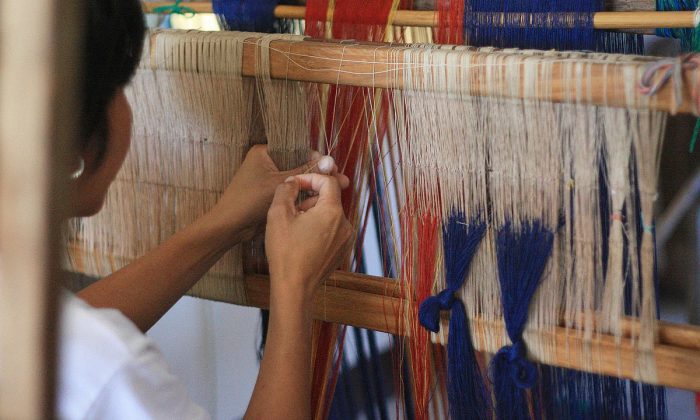The ultimate ’80s poster car is back!
LONG BEFORE the terms “supercar” or “hypercar” were ever coined, there was the “exotic car.” And no car represented that term better than the Lamborghini Countach. Debuting at the 1971 Geneva Motor Show, the Countach became an instant showstopper. Impossibly low, impossibly wide, and sporting an impossibly sleek wedge shape, the Countach sparked a revolution in how sports cars are designed. And that’s even before the spectacular “scissor” doors were opened.
The Lamborghini Countach was a true “disruptor,” 50 years before that term became popular.
And now, in celebration of the 50th year of the Countach’s world debut, Lamborghini is unleashing a new limited-edition Countach — a homage that embodies the still-incredible attributes of the original while boasting cutting-edge technologies that enable it to deliver the sensational performance expected of a legend.
But while the original Countach models were referred to as LP 400 and LP 500, the new one will be the LPI 800-4 — the “800” referring to the car’s rounded-off 814cv of power (and “4” for the new car’s all-wheel drive). Only 112 units will be made — the number referring to the “LP 112” internal designation of the car when it was being developed. And yes, all 112 units have been spoken for, with customer deliveries beginning next year.
“The Countach LPI 800-4 is a visionary car of the moment, just as its forerunner was,” says Automobili Lamborghini President and CEO Stephan Winkelmann. “One of the most important automotive icons, the Countach not only embodies the design and engineering tenet of Lamborghini but represents our philosophy of reinventing boundaries, achieving the unexpected and extraordinary and, most importantly, being the ‘stuff of dreams.’ The Countach LPI 800-4 pays homage to this Lamborghini legacy but it is not retrospective: it imagines how the iconic Countach of the ’70s and ’80s might have evolved into an elite super sports model of this decade. It upholds the Lamborghini tradition of looking forward, of exploring new design and technology avenues while celebrating the DNA of our brand. It is a Lamborghini that innately expresses the marque’s enduring and emotive power: Always inspirational and thrilling to see, hear and, most of all, drive.”
Despite the model not being on the market for over two decades, the new Countach is instantly recognizable as exactly that — the new Countach. And if you’ve been wondering what the name means, the “Countach” moniker is an expression of surprise and wonder in Piedmontese dialect. Unlike the Miura, Gallardo, Huracan, and several other Lamborghini model names, the Countach (pronounced “koon-tash) is not a bull breed or a name of a famous bull.
“The first Countach has been present in our Centro Stile as a model for some years now,” explains Mitja Borkert, head of Centro Stile. “Whenever I look at it, it gives me goose bumps and it serves as the perfect reminder for me and the entire design team to design every future Lamborghini in a visionary and futuristic way. This is an unnegotiable part of our DNA, the essence if you so will. The first Countach shaped the Lamborghini design DNA like no other car; the new Countach translates that unconventional and edgy character into the future.”
The car keeps its distinctive silhouette with the essential line running from front to rear, sharp angles and lines, and a distinctive wedge shape. It has an innovative modern super sports design that will also be surely reflected in future Lamborghini models. The Countach LPI 800-4 develops the characteristic lines of the nameplate’s five models over nearly 20 years.
The final outline is pure and uncluttered, with references to the first LP 400 and LP 500. Giving the LPI 800-4 a distinctive Countach face, inspiration was taken from the Quattrovalvole edition in the assertive lines of the hood with long, low rectangular grille and headlights, as well as in the wheel arches with their hexagonal theme. The sharp inclination of the greenhouse adopts the straight lines redolent of the original Countach. There is no fixed rear wing outside the pure lines (there is a subtle retractable three-position rear spoiler), and the air scoops are integrated fluidly in the strong shoulders of the car, embellished with the distinctive Countach slatted “gills.” The iconic and aerodynamically powerful NACA air intakes cut into the side and doors of the Countach LPI 800-4 while the distinctive Periscopio lines run through the roof to the rear of the car, particularly distinctive if viewed from above.
The rear of the Countach LPI 800-4 is immediately recognizable from its distinctive inverted wedge shape, with the rear bumper featuring a lower, sleeker line, and the ‘hexagonita’ design shaping the three-unit rear light clusters. The LPI 800-4 sports the four-strong exhaust tail pipes of the Countach family, connected within the carbon fiber rear diffuser. Access for driver and passenger is of course via the pioneering scissor doors, first introduced on the Countach and that have since become a Lamborghini V12 signature.
The V12 engine of the vehicle is as legendary as the design. Mounted behind the driver in a forward-cabin layout, the original Countach featured side-mounted radiators from Formula One; forward-facing gearbox and tubular spaceframe technology. More racecar wizardry for the new Countach, which has a 2,700mm wheelbase and 43:57 front-to-rear weight balance, comes from the pushrod magnetorheological active front and rear suspension with horizontal dampers and springs.
It was as revolutionary in its approach to sports car engineering as in its astonishing looks. The Countach developed the best available technologies to produce an extraordinary car. This visionary philosophy is reflected in the Countach LPI 800-4, taking the pinnacle of current Lamborghini technologies and engineering to produce the performance expected from a Countach in 2021.
“The engineering team that developed the original Countach advanced Lamborghini’s pioneering technical approach, delivering unexpected innovations and the best performance available in a production car,” says Lamborghini Chief Technology Officer Maurizio Reggiani. “That spirit inherently drives Lamborghini R&D, resulting in the pioneering hybrid technology in the LPI 800-4, and the emotive driving experience and top-line performance expected from a flagship V12 Lamborghini.”
The 6.5-liter V12 — outputting 780cv at 8,500rpm and 720Nm at 6,750rpm — is combined with a 48-volt e-motor mounted directly on the seven-speed clutch-less gearbox providing a further 34cv/35Nm for immediate response and increased performance. It’s the same innovative architecture developed for the Sián — the only mild-hybrid technology to create a direct connection between electric motor and wheels, preserving the pure V12 behavior. The e-motor is powered by a supercapacitor providing three times more power compared to a lithium-ion battery. Perhaps the biggest departure from the original rear-wheel drive Countach is the new car’s Haldex Gen-IV AWD system.
Numbers? Zero to 100kph in 2.8 seconds, zero to 200kph in 8.6 seconds, with a top speed of 355kph. It can brake from 100kph to a standstill in a stunning 30 meters.
Shunning the now-common electric power steering, Lamborghini employed hydraulic power steering, with three different characteristics coupled with Lamborghini Dynamic Steering (LDS) and Rear Wheel Steering (RWS), all managed by drive select mode.
The monocoque chassis and all the body panels are in carbon fiber, providing light weight and exceptional torsional stiffness — the Countach LPI 800-4 weighs only 1,595 kg for a dry weight-to-power ratio of 1,95 kg/cv. Carbon fiber is seen on the front splitter, around the front window and wing mirrors, engine cover air intakes and rocker panel and it is always present in specific interior details. Moveable air vents produced by the state-of-the-art 3D printing technology, and a photochromatic roof — changing from solid to transparent at the push of a button — act as a reminder that this car, despite its historic inspiration, is a future automotive screensaver for the 21st century.
The Countach LPI 800-4 is unveiled in a dedicated color Bianco Siderale, containing a hint of pearlescent blue and reminiscent of Ferruccio Lamborghini’s own Countach LP 400 S, complete with red and black leather heritage interior.
The Countach LPI 800-4 20-inch (front) and 21-inch (rear) wheels are created in the “telephone” style of the 1980s, fitted with carbon ceramic brake discs, and Pirelli P Zero Corsa tires with size 255/30R20 for the front and 355/25R21 for the rear. (The original Countach had then-widest 345/35R15 Pirelli P7 tires.)
Owners of the exclusive limited edition Countach LPI 800-4 can choose from a range of heritage exterior paint options, such as the iconic Impact White, Giallo Countach, and Verde Medio. Otherwise, the contemporary palette offers modern metallic colors, such as Viola Pasifae or Blu Uranus.
An 8.4-inch HDMI center touchscreen unique to the LPI 800-4 manages car controls including Apple CarPlay. It also includes a unique button entitled “Stile” (Design): pressed, it explains the Countach design philosophy to its privileged audience.
Lamborghini set the automotive world on fire when it unveiled the Countach in 1971. Fifty years later, it is doing exactly the same with the new Countach LP 800-4. And all the world’s a stage yet again.























